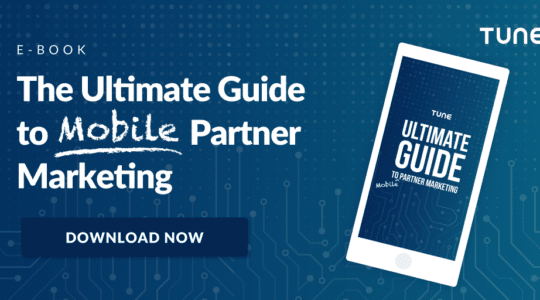As mobile advertising continues to grow faster than all other digital advertising formats, there is a need for advertisers to not only focus on mobile, but also optimize campaigns for specific audiences in local markets.
This means ad networks must work with publishers all over the world, which creates unique challenges that can make or break campaigns. Here’s a guide to understanding the global market for ad networks, and how best to approach mobile campaigns with a diverse mix of advertisers and publishers.
Mobile Advertising is Overtaking Desktop
Mobile display ads will overtake desktop display-related spending by 2017, according to a Business Insider report. Moreover, it’s predicted that mobile search will overtake desktop search ad revenue by 2019.
These insights are key when working on global campaigns. For example, when looking at the share of digital display ad spending by device, IAB Netherlands found that mobile, including mobile phones, tablets, and in-app advertising, made up 24 percent of the total amount spent on display ads in the Netherlands during Q1 2015. Compared with the same period in 2014, mobile ad spending has increased by nearly 50 percent.
“Everyone should be going mobile, it’s the future. But you can’t do the same thing as you do on desktop,” noted AppLift‘s Managing Director Konstantin Dieterle when speaking on a panel at Affiliate Summit in New York earlier this year.
Dieterle’s fellow panelists observed the same thing: Not only can you not treat mobile the same way you treat desktop, you also can’t assume that mobile behavior will be the same in every region across the globe.
Mobile Behavior Differs by Country
In Europe, it is much better to encourage an app install or an m-commerce action rather than taking users to native mobile content, according to Florian Lehwald, founder and president of KissMyAds. In mobile-first regions such as Southeast Asia and Latin America, Lehwald noted it’s the opposite case.
The need to optimize mobile campaigns to meet the needs of a particular local audience means ad networks must work with region-specific publishers that already command market share and who know the consumption habits of locals in that area. The better your ad is targeted to them, the more effective it will be, and publishers who are close to and familiar with the market can help with this.
Communication is Key for a Global Relationship
The fast-paced nature of mobile marketing can be a strain on how ad networks and publishers work together. Ad networks need to be readily accessible to address new issues when they arise.
“Not communicating with the publishers and affiliates will ruin the relationship,” says Benjamin Pomerantz, CEO of Pocket Media. “Even with our offices located all over the world, it’s not always easy to respond right away. But a 24-hour turnaround needs to happen, otherwise the publisher or affiliate will end up asking another advertiser and their focus will be off you as an advertiser.”
Problem solving is 99% of the job, according to Pomerantz.
“Just be available when it’s convenient for your publisher or affiliate. If you’re available when it’s convenient for the publisher or affiliate, you can efficiently discuss new campaigns, optimizations, or trends in the industry they are looking into testing.”
Publishers are busy, says Pomerantz. If a marketer can establish ways to simplify and focus communications, the process becomes more efficient and productive for both parties.
“To be the most effective and efficient account manager, communication needs to have a single main focus, whether it be one campaign to start, hints on how to optimize a current campaign, or a request for a volume amount for a specific geo/device,” Pomerantz says. “Always follow up a telephone or Skype call with an email that summarizes the key details of what you discussed.”
A critical part to running an effective advertising scheme is knowing how publishers set up and launch their mobile campaigns.
“This way if an issue comes up, the advertiser can proactively find the issue, fix it, and later on bring up that there was a problem,” Pomerantz says. “Also, clearly defining and communicating the process prevents the advertiser from repeatedly asking the same questions: ‘When will the traffic start?’ or ‘What eCPC/eCPM do you need?'”
As seen above, many obstacles can arise when working with a publisher from another country. Communication is a critical part of reducing such issues. But there’s more an ad network needs to do than maintaining contact with foreign advertisers and publishers. Here are five tips for a productive work relationship:
5 Tips for Working with Global Publishers
- Follow their time zone
You don’t have to be in the same time zone as the publishers you work with to develop strong relations with them, but it’s vital that you are awake when they’re awake. If you cannot troubleshoot because of different time zones, publishers will find someone who can give them more immediate assistance. - Have a payment system in place that works in multiple countries
Your payment system must work in multiple countries. This means you must double-check before assuming anything. For example, while PayPal is available in 203 markets and 26 currencies, it may not work for all of your publishers. Payoneer is another great financial service that provides online money transfers and e-commerce payments. - Translate dashboards into critical target languages
If you’re working with many foreign publishers, your documents might not be available in their specific language. Minimize such barriers by having your homepage or dashboard translated accurately into a few target languages publishers can read. - Be culturally aware
Different cultures have different communication styles. This means that some publishers may not always understand if you are requesting them to take action or commit to a plan. It’s important to use cordial but clear language when making requests. Publishers in different regions also may prefer different communications platforms depending on what’s popular in their region, such as Skype, WhatsApp, or Google Hangouts.
5. Set expectations
Make sure your publishers understand what your response time is, what kind of support you will give, and what kind of questions they should come to you with. By clarifying these parameters upfront, you’ll avoid any riffs or misunderstandings down the road once your campaigns are live.
Establish these principles as regular habits, and you’ll have a successful work relationship with publishers around the world.
Like this article? Sign up for our blog digest emails.
Author
As TUNE's former COO, Cameron oversaw operations at TUNE, including human resources, global office operations, IT and customer service teams. Previously, Cameron was GM leading TUNE's flagship product, HasOffers, actively contributing to business development and product strategies. Before joining the company in 2009, Cameron worked with Robert Half International for Fortune 500 clients, developing and maintaining relationships by consulting corporations on their organizational development and staffing needs. Since joining TUNE in 2009, Cameron has combined his business development and leadership experience with customer-centric views to deliver an experience that revolutionizes customer care standards in the industry. Cameron graduated from Washington State University with a Bachelor’s in Finance and Economics.





Leave a Reply
You must be logged in to post a comment.